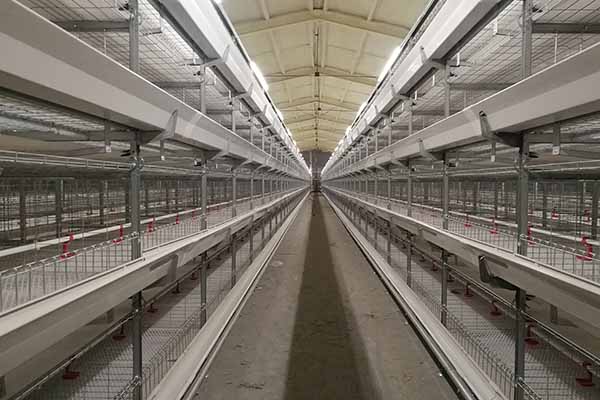Effective Poultry Cage Temperature Control: Ensuring Optimal Conditions for Birds
Introduction to Poultry Cage Temperature Management
Proper poultry cage temperature control is crucial in the avian farming industry to maintain bird health and productivity. Incorrect temperature can lead to various issues such as reduced egg production, decreased growth rate, and increased disease susceptibility. This article will delve into the importance of temperature control in poultry cages and provide insights into achieving optimal conditions for birds.
Key Factors Affecting Poultry Cage Temperature
Several factors can impact the temperature within poultry cages, including environmental conditions, bird density, and equipment inefficiency. Understanding these factors is the first step towards effective temperature management.
- Environmental Conditions: Weather patterns, humidity, and wind can significantly affect cage temperature. Extreme temperatures can cause heat stress or chilling, leading to health problems in birds.
- Bird Density: The number of birds per cage plays a vital role in regulating the internal temperature. Higher densities can lead to overheating, while lower densities might not generate enough heat.
- Equipment Efficiency: Outdated or inefficient heating and cooling systems can lead to uneven temperature distribution and increased energy costs.
Temperature Control Strategies
Implementing the following strategies can help maintain ideal cage temperatures for your poultry:
- Automated Systems: Utilize automated temperature control systems that adjust heating and cooling based on real-time data. This ensures consistent and optimal conditions.
- Insulation: Proper insulation in the cage and building can minimize temperature fluctuations due to external conditions.
- Heat sinks and Radiators: Place heat sinks and radiators strategically within the cage to distribute heat evenly.
- Airflow Management: Ensure adequate airflow to prevent overheating and to maintain a comfortable environment.
Monitoring and Maintenance
Regular monitoring and maintenance of the temperature control systems are essential to ensure their proper functioning and longevity.
- Thermometers: Use digital thermometers to monitor cage temperature and ensure it stays within the recommended range (68-75°F or 20-24°C).
- Service Schedule: Adhere to a regular service schedule for heating and cooling systems to prevent breakdowns and maintain efficiency.
- Employee Training: Train staff on the importance of temperature control and how to operate and maintain the equipment.
Case Study: Improving Poultry Farm Productivity with Temperature Control
A poultry farm implemented advanced temperature control measures in their cages, resulting in the following benefits:
– Increased Egg Production: By 15%.
– Decreased Mortality Rates: By 10%.
– Reduced Energy Costs: By 20%.
By investing in effective temperature control, the farm saw significant improvements in their operational efficiency and profitability.
Conclusion
Poultry cage temperature control is a critical aspect of avian farming that can impact the overall health and productivity of birds. By implementing the strategies outlined in this article, you can create an optimal environment for your birds, resulting in improved production and reduced costs.
For more information on how to implement effective temperature control in your poultry farm, or to request a free, detailed poultry farming design plan and equipment quotation from LIVI Mechanical, please feel free to leave a comment or contact us directly.
, , , , 




